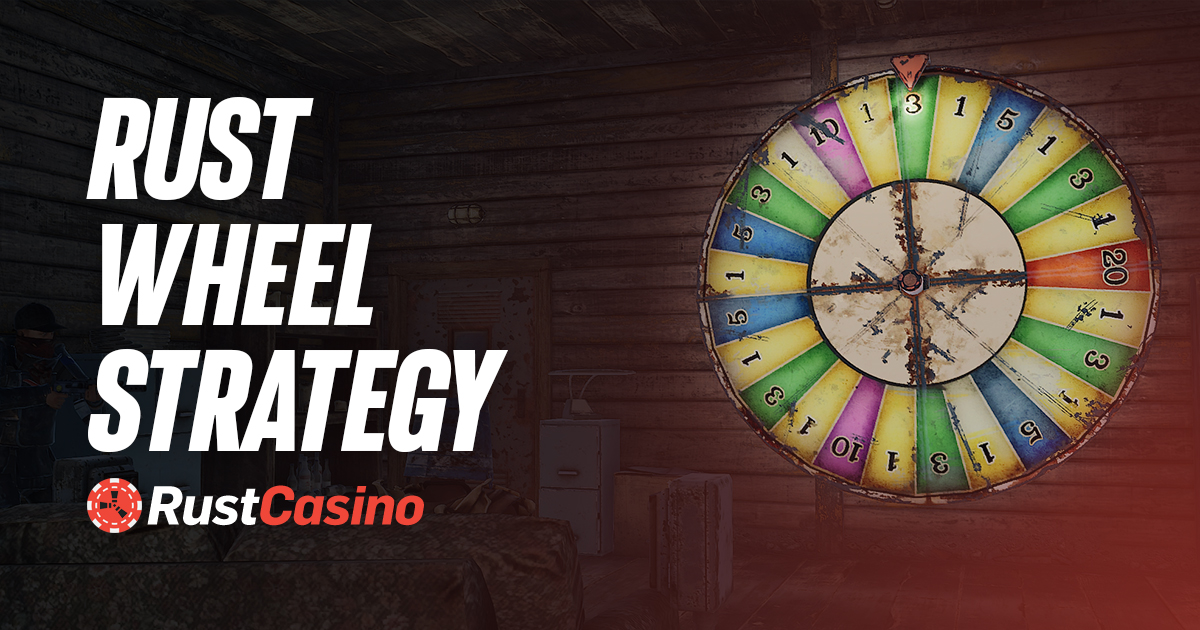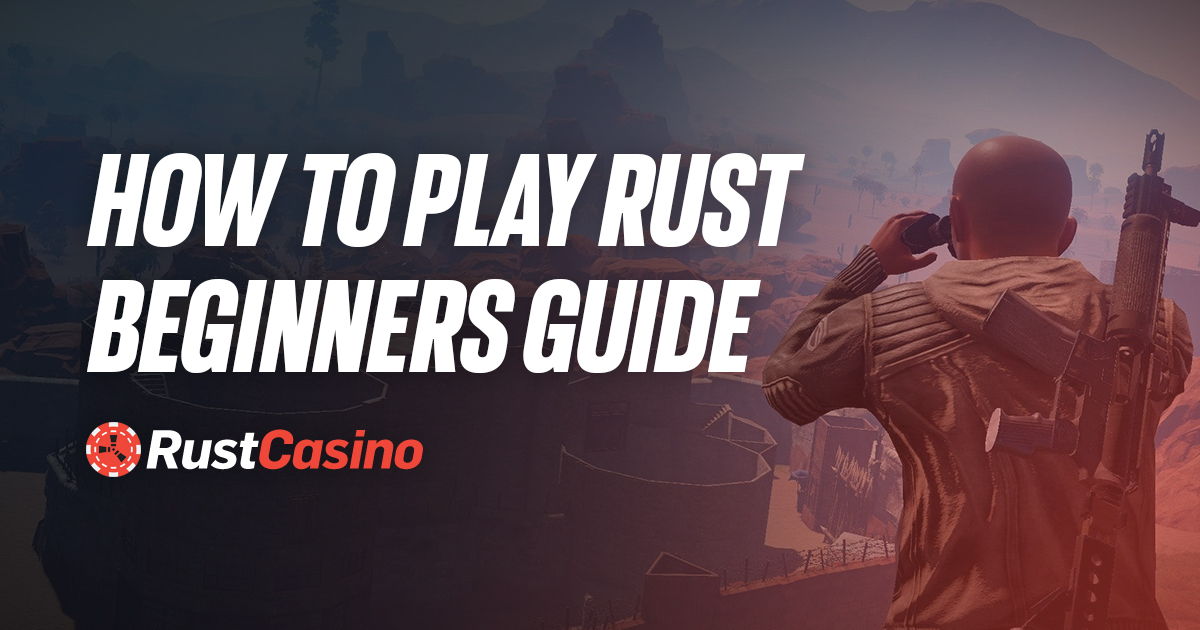Navigating the vast and ever-changing world of Rust can be a daunting task. With its expansive map filled with diverse biomes and treacherous terrains, understanding the lay of the land is crucial for survival and progression. Whether you’re a seasoned veteran or a newcomer to the game learning how to play Rust, having a comprehensive understanding of the Rust map is essential.
The Rust map is divided into various biomes, each offering its own unique challenges and resources. From lush forests teeming with wildlife to barren deserts where water is scarce, every biome presents different opportunities and threats. Knowing where to find valuable resources, strategic locations for building bases, and safe routes for travel can mean the difference between success and failure in this unforgiving world.

In this guide, we will delve into the intricacies of the Rust map, exploring its different biomes and terrains while providing valuable tips on how to navigate them effectively. So grab your gear, sharpen your senses, and get ready to conquer the wild landscapes of Rust!
How to Use the Rust Map
To navigate the vast and treacherous world of Rust, you’ll need to master the art of using the map. Whether you’re a seasoned player or just starting out, understanding how to effectively utilize the Rust map is crucial for survival.
Navigating with Grid Coordinates
One of the fundamental ways to navigate the Rust map is by using grid coordinates. The map is divided into a grid system consisting of letters along the top and numbers along the side. By combining these letters and numbers, you can pinpoint specific locations on the map. For example, if you see a coordinate like E7 on your screen, it means that location can be found at column E and row 7 on the map.
Using grid coordinates allows you to communicate specific locations with other players or mark areas of interest for yourself. It’s like giving someone an address in real life – it helps them find exactly where they need to go in this vast virtual landscape.
Utilizing Landmarks and Monuments as Reference Points
Another effective way to navigate in Rust is by utilizing landmarks and monuments as reference points on your map. These prominent features are scattered throughout the game world and serve as reliable indicators of your position.
Landmarks can include unique rock formations, large bodies of water, or distinct natural features that stand out from their surroundings. Monuments, on the other hand, are man-made structures such as power plants or military tunnels that provide valuable resources but also attract other players seeking those same resources.
By familiarizing yourself with these landmarks and monuments, you can easily orient yourself within the game world without relying solely on grid coordinates. They act as visual cues that help you understand where you are relative to other points of interest.
Marking Locations for Future Reference
In Rust, it’s essential to mark locations on your map for future reference. Whether it’s a hidden stash of resources, a friendly player’s base, or a dangerous area to avoid, marking these locations can be a game-changer.
By using the map interface, you can place custom markers on specific coordinates or landmarks. This allows you to create your own personal annotations and reminders that will persist across gameplay sessions. You can color-code markers, add notes, or use different symbols to represent different types of locations.
Marking locations not only helps you navigate more efficiently but also enables you to share valuable information with teammates or friends. It fosters collaboration and ensures everyone is on the same page when planning raids or exploring new territories.
All Types of Rust Maps
Rust, a popular survival game, offers various types of maps that provide unique landscapes, resources, and challenges for players. These maps are generated procedurally, meaning they are randomly created by the game itself. This ensures that each time you play, you’ll encounter a different environment due to regular updates.
Procedural Map

One type of map in Rust is the procedural map. These maps feature diverse biomes and terrains, each with its own characteristics and difficulties. One such biome is the barren biome – a desolate and harsh landscape where survival can be particularly challenging. In this unforgiving environment, resources are scarce, forcing players to adapt their strategies to thrive against the odds.
To survive in the barren biome, players must be resourceful and strategic. They need to carefully manage their supplies and prioritize essential items such as food, water, and shelter. Exploring nearby areas for hidden caches or venturing into more dangerous territories may yield valuable resources. Teaming up with other players can enhance your chances of survival by sharing resources and expertise.
Barren Map

Apart from procedural maps, Rust also allows players or server administrators to create custom maps tailored to specific gameplay preferences. Custom maps offer a wide range of options for players seeking unique experiences within the game. From PvP-focused arenas where combat skills are put to the test to role-playing environments that encourage immersive storytelling – there’s something for everyone.
The benefits of playing on custom maps are abundant. Players have greater control over the layout and design of these maps while incorporating specific features or challenges they find appealing. It fosters creativity among players who enjoy building intricate bases or designing complex obstacles for others to overcome.
Custom Map

In addition to procedural and custom maps, Facepunch Studios provides stock maps as part of Rust’s official offerings. These stock maps come pre-designed and offer distinct features, sizes, and layouts. Each stock map caters to different playstyles, allowing players to choose the one that aligns with their preferences.
Popular stock maps in Rust include Hapis Island, a handcrafted official map known for its unique geographical characteristics and landmarks. Surviving on Hapis Island requires mastering the environment by understanding the layout of various regions, such as rocky terrains or dense forests. Players must adapt their strategies accordingly to navigate challenges and secure valuable resources.
Everything About Rust Islands
Rust Islands offers a variety of maps, each with its own unique characteristics. One such map is Savas Island, an official PvP-oriented map that guarantees intense player encounters. Unlike larger maps, Savas Island is smaller in size, making it the perfect battleground for those seeking action-packed battles. To dominate on this island, strategic positioning plays a crucial role. Finding advantageous spots and utilizing cover can give you the upper hand in battles.
Hapis Island

Hapis Island is known for its temperate biomes that provide a pleasant environment for players. These biomes are filled with abundant resources such as forests and wildlife, making them ideal for base building and farming activities. With plenty of trees to gather wood from and animals to hunt for food, players can establish thriving bases on Hapis Island without much difficulty.
Savas Island

Savas Island presents a completely different experience with its desert biome characterized by arid landscapes. In this challenging setting, water sources are limited, posing unique obstacles for players. Surviving in the desert biome requires adaptability and resourcefulness. Players must strategize their movements carefully to ensure they have access to water and essential resources while avoiding confrontations that could drain their supplies.
To overcome the challenges of the desert biome on Savas Island, players need to prioritize finding water sources early on. This could mean venturing out towards oases or locating areas where rivers flow through the map. Being mindful of inventory management becomes crucial since dehydration can quickly become an issue without sufficient water supplies.
Rust Biomes and Their Characteristics
Rust is a game that features a vast and diverse map with different biomes, each offering its own unique challenges and opportunities. One of the most intriguing biomes in Rust is the snowy region. Exploring these snow-covered areas can be an exhilarating experience, but it also comes with its fair share of dangers. Cold temperatures, blizzards, and other environmental hazards await those who venture into these icy territories. To survive in such harsh conditions, players must ensure they have proper clothing to keep warm, find or build shelter to protect themselves from the elements, and have a reliable heat source to stay alive.
Temperate

Another fascinating biome within the Rust map is the temperate region, home to some of the game’s most impressive monuments. These monumental structures not only serve as landmarks but also offer various advantages for players who dare to explore them. From towering lighthouses that provide a vantage point for scouting enemies or valuable loot locations, to sprawling power plants that house high-tier loot crates and provide opportunities for intense player versus player (PvP) encounters – there is something for everyone in these temperate biomes. Players seeking valuable resources or thrilling PvP encounters often flock to these popular destinations within the Rust map.
Desert

The desert biome in Rust presents its own set of challenges and rewards. With scorching temperatures during the day and freezing cold nights, surviving in this arid landscape requires careful planning and preparation. Water scarcity becomes a pressing issue as players must locate wells or other water sources to quench their thirst. Sandstorms occasionally sweep through these desolate lands, impairing visibility and making navigation more difficult. However, resourceful players can take advantage of this harsh environment by utilizing sand dunes as natural cover during battles or strategically positioning themselves near valuable resource nodes found within this biome.
Snow

Lastly, we have the snow biome, a beautiful yet treacherous landscape covered in a thick blanket of snow. Besides the freezing temperatures and blizzards mentioned earlier, this biome also presents unique challenges such as limited visibility due to heavy snowfall. Players must adapt their strategies accordingly, taking advantage of the terrain and using natural features like rocks or trees for cover during engagements. The snow biome is also home to various wildlife, including bears and wolves, which can pose a threat to unsuspecting players. However, those who brave these hazards will be rewarded with valuable resources like high-quality metal nodes or even rare items found only in this snowy region.
Rust Monuments
Now that we’ve covered the diverse biomes in Rust, it’s time to explore another crucial aspect of the game: monuments. Monuments are key locations on the map that offer valuable resources, loot, and opportunities for encounters with other players. They come in various shapes and sizes, each with its own unique characteristics and advantages.

Top 5 Best Rust Monuments
- Airfield: The Airfield is a massive monument with a sprawling layout and multiple buildings to explore. It offers a wide array of loot, including military-grade weapons, ammunition, and valuable components. However, beware of heavily armed players who often patrol this area looking for loot or PvP encounters.
- Power Plant: The Power Plant is an imposing structure that houses valuable loot crates and puzzles to solve. It provides access to high-tier components, electrical items, and even the coveted elite crates. Be prepared for radiation zones and potential confrontations with other players vying for the same rewards.
- Train Yard: The Train Yard is a hotspot for both resources and action. It contains multiple train cars filled with loot crates, as well as warehouses and offices to explore. Keep an eye out for scientists guarding the area and be ready to defend yourself against other players seeking valuable items.
- Launch Site: The Launch Site is one of the most challenging monuments in Rust but offers incredible rewards for those brave enough to conquer it. This massive rocket launch facility is home to elite crates, military-grade weapons, and advanced components. However, be prepared for heavy radiation zones, dangerous puzzles, and fierce competition from other players.
- Water Treatment Plant: The Water Treatment Plant is an excellent monument for early to mid-game players seeking valuable resources such as scrap metal, barrels, crates, and even blueprints. It provides a good balance of loot without overwhelming radiation zones or excessive player density.
These top five monuments in Rust offer a combination of valuable loot, engaging puzzles, and exciting encounters with other players. Each monument presents its own set of challenges and rewards, making them worth exploring for any Rust player.
Remember, when venturing into these monuments, it’s crucial to come prepared with weapons, armor, and medical supplies. Be mindful of other players who may be lurking nearby, ready to engage in PvP combat. Communication and teamwork can also greatly increase your chances of success when navigating these monuments.
In conclusion, Rust monuments are key locations on the map that offer valuable resources and opportunities for encounters with other players. The Airfield, Power Plant, Train Yard, Launch Site, and Water Treatment Plant are among the best monuments to explore in Rust. Each monument provides unique challenges and rewards that cater to different stages of gameplay. So gear up, strategize with your team, and embark on an exciting adventure through these iconic landmarks in Rust!
Frequently Asked Questions
Is the Rust map the same every time you play?
The Rust map is not the same every time you play. The game generates procedural maps, which means they are randomly created by the game itself. This ensures that each time you play, you’ll encounter a different environment due to regular updates.
How do I navigate the Rust map effectively?
To navigate the Rust map effectively, you can use grid coordinates, landmarks, and custom markers. Grid coordinates help you pinpoint specific locations on the map by combining letters and numbers. Landmarks and monuments serve as reference points for orientation. Custom markers allow you to mark locations for future reference, such as hidden stashes or dangerous areas.
Can I create my own custom map in Rust?
Yes, Rust allows players or server administrators to create custom maps tailored to specific gameplay preferences. Custom maps offer a wide range of options for players seeking unique experiences within the game. You have control over the layout and design of these maps, fostering creativity and allowing you to incorporate specific features or challenges.


